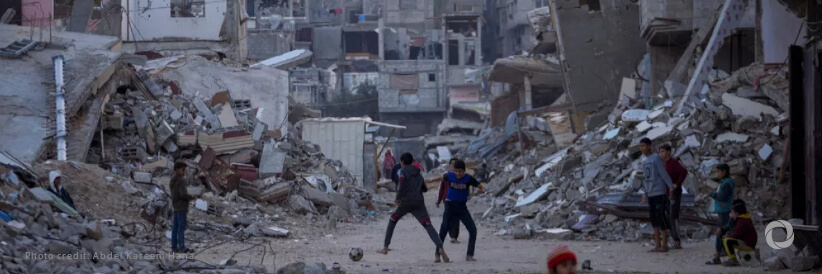After nearly 500 days of war in Gaza, a ceasefire was announced. Since conflict broke out on Oct. 7, 2023, almost 46,000 Palestinians and 1,600 Israelis have died. Nearly 2 million people in Gaza — roughly the entire population — have been displaced.
The region is facing deadly food insecurity and has little or no access to basic hygiene, clean water, protection, or shelter. For nearly a year and a half, there has been no safe space in Gaza, and survivors have endured months of harsh winter, airstrikes, landmines, bombardments, and critical levels of malnutrition.
Despite the welcome news of a ceasefire, the aftermath still poses significant risks to civilians. Action Against Hunger is calling for increased humanitarian aid. There are only 600 trucks per day currently scheduled to deliver necessities — far from enough to feed a population on the brink of famine.
“Thousands of families have been in extreme hunger for months, not knowing when or where their next meal will come from,” said Natalia Anguera, Action Against Hunger’s Head of Operations for the Middle East. “The opening of the land crossings announced in the ceasefire is vital. We are calling for the opening of as many entry points as possible to ensure that humanitarian aid reaches the whole population of the Strip, a territory where internal mobility restrictions could leave entire areas without the necessary support.”
Before the conflict, around 500 trucks of humanitarian aid entered the Strip every day, but in 2024, only about 100 trucks per day entered on average.
“We welcome the 600 trucks per day agreed in the ceasefire, but it is important to remember that even before the conflict, the humanitarian community was already claiming that 500 trucks per day was insufficient,” said Anguera. “It is more necessary than ever to increase the amount of aid, given that the level of destruction and humanitarian needs are extraordinarily more critical now than they were before October 2023.”
Anguera added that there are numerous limitations on importing certain supplies. “In addition to the entry of trucks, we need to ease restrictions on the type of materials allowed, especially those related to the rehabilitation of water and sanitation services and essential items to cope with the winter, such as platforms for leveling tents and waterproof clothing,” she said.
Gaza after ceasefire
“In the aftermath of the ceasefire, we hope to be able to recover the activities we were doing before October 2023, which focused on ensuring that Palestinians have the tools to lead,” said Anguera. “It is essential that all humanitarian activities that follow are complementary to Palestinian civil society organizations and NGOs. For example, if bakeries and hospitals can be rehabilitated and functioning, we will be able to expand our support to women’s cooperatives in Gaza or increase our nutrition activities in the most affected areas, such as northern Gaza.”
The level of destruction in Gaza is enormous, said Anguera, and humanitarian organizations will have to support shelter spaces for people who have lost their homes, as well as rehabilitate countless houses and structures.
Action Against Hunger has been working in Gaza for more than 20 years. Since October 2023, the organization’s teams have had to focus all their efforts on scaling up the emergency response under unprecedented working conditions. In Gaza alone, Action Against Hunger increased its staff from 60 to 130 humanitarian workers.
These efforts have enabled Action Against Hunger to help more than one million people in Gaza and the West Bank through activities to prevent and treat malnutrition among women and children, including through the distribution of meals and clean water, support to farmers and small businesses, the production of fresh food and vegetables in Gaza, and much more.

